HSBC 2015 Annual Report Download - page 359
Download and view the complete annual report
Please find page 359 of the 2015 HSBC annual report below. You can navigate through the pages in the report by either clicking on the pages listed below, or by using the keyword search tool below to find specific information within the annual report.-
 1
1 -
 2
2 -
 3
3 -
 4
4 -
 5
5 -
 6
6 -
 7
7 -
 8
8 -
 9
9 -
 10
10 -
 11
11 -
 12
12 -
 13
13 -
 14
14 -
 15
15 -
 16
16 -
 17
17 -
 18
18 -
 19
19 -
 20
20 -
 21
21 -
 22
22 -
 23
23 -
 24
24 -
 25
25 -
 26
26 -
 27
27 -
 28
28 -
 29
29 -
 30
30 -
 31
31 -
 32
32 -
 33
33 -
 34
34 -
 35
35 -
 36
36 -
 37
37 -
 38
38 -
 39
39 -
 40
40 -
 41
41 -
 42
42 -
 43
43 -
 44
44 -
 45
45 -
 46
46 -
 47
47 -
 48
48 -
 49
49 -
 50
50 -
 51
51 -
 52
52 -
 53
53 -
 54
54 -
 55
55 -
 56
56 -
 57
57 -
 58
58 -
 59
59 -
 60
60 -
 61
61 -
 62
62 -
 63
63 -
 64
64 -
 65
65 -
 66
66 -
 67
67 -
 68
68 -
 69
69 -
 70
70 -
 71
71 -
 72
72 -
 73
73 -
 74
74 -
 75
75 -
 76
76 -
 77
77 -
 78
78 -
 79
79 -
 80
80 -
 81
81 -
 82
82 -
 83
83 -
 84
84 -
 85
85 -
 86
86 -
 87
87 -
 88
88 -
 89
89 -
 90
90 -
 91
91 -
 92
92 -
 93
93 -
 94
94 -
 95
95 -
 96
96 -
 97
97 -
 98
98 -
 99
99 -
 100
100 -
 101
101 -
 102
102 -
 103
103 -
 104
104 -
 105
105 -
 106
106 -
 107
107 -
 108
108 -
 109
109 -
 110
110 -
 111
111 -
 112
112 -
 113
113 -
 114
114 -
 115
115 -
 116
116 -
 117
117 -
 118
118 -
 119
119 -
 120
120 -
 121
121 -
 122
122 -
 123
123 -
 124
124 -
 125
125 -
 126
126 -
 127
127 -
 128
128 -
 129
129 -
 130
130 -
 131
131 -
 132
132 -
 133
133 -
 134
134 -
 135
135 -
 136
136 -
 137
137 -
 138
138 -
 139
139 -
 140
140 -
 141
141 -
 142
142 -
 143
143 -
 144
144 -
 145
145 -
 146
146 -
 147
147 -
 148
148 -
 149
149 -
 150
150 -
 151
151 -
 152
152 -
 153
153 -
 154
154 -
 155
155 -
 156
156 -
 157
157 -
 158
158 -
 159
159 -
 160
160 -
 161
161 -
 162
162 -
 163
163 -
 164
164 -
 165
165 -
 166
166 -
 167
167 -
 168
168 -
 169
169 -
 170
170 -
 171
171 -
 172
172 -
 173
173 -
 174
174 -
 175
175 -
 176
176 -
 177
177 -
 178
178 -
 179
179 -
 180
180 -
 181
181 -
 182
182 -
 183
183 -
 184
184 -
 185
185 -
 186
186 -
 187
187 -
 188
188 -
 189
189 -
 190
190 -
 191
191 -
 192
192 -
 193
193 -
 194
194 -
 195
195 -
 196
196 -
 197
197 -
 198
198 -
 199
199 -
 200
200 -
 201
201 -
 202
202 -
 203
203 -
 204
204 -
 205
205 -
 206
206 -
 207
207 -
 208
208 -
 209
209 -
 210
210 -
 211
211 -
 212
212 -
 213
213 -
 214
214 -
 215
215 -
 216
216 -
 217
217 -
 218
218 -
 219
219 -
 220
220 -
 221
221 -
 222
222 -
 223
223 -
 224
224 -
 225
225 -
 226
226 -
 227
227 -
 228
228 -
 229
229 -
 230
230 -
 231
231 -
 232
232 -
 233
233 -
 234
234 -
 235
235 -
 236
236 -
 237
237 -
 238
238 -
 239
239 -
 240
240 -
 241
241 -
 242
242 -
 243
243 -
 244
244 -
 245
245 -
 246
246 -
 247
247 -
 248
248 -
 249
249 -
 250
250 -
 251
251 -
 252
252 -
 253
253 -
 254
254 -
 255
255 -
 256
256 -
 257
257 -
 258
258 -
 259
259 -
 260
260 -
 261
261 -
 262
262 -
 263
263 -
 264
264 -
 265
265 -
 266
266 -
 267
267 -
 268
268 -
 269
269 -
 270
270 -
 271
271 -
 272
272 -
 273
273 -
 274
274 -
 275
275 -
 276
276 -
 277
277 -
 278
278 -
 279
279 -
 280
280 -
 281
281 -
 282
282 -
 283
283 -
 284
284 -
 285
285 -
 286
286 -
 287
287 -
 288
288 -
 289
289 -
 290
290 -
 291
291 -
 292
292 -
 293
293 -
 294
294 -
 295
295 -
 296
296 -
 297
297 -
 298
298 -
 299
299 -
 300
300 -
 301
301 -
 302
302 -
 303
303 -
 304
304 -
 305
305 -
 306
306 -
 307
307 -
 308
308 -
 309
309 -
 310
310 -
 311
311 -
 312
312 -
 313
313 -
 314
314 -
 315
315 -
 316
316 -
 317
317 -
 318
318 -
 319
319 -
 320
320 -
 321
321 -
 322
322 -
 323
323 -
 324
324 -
 325
325 -
 326
326 -
 327
327 -
 328
328 -
 329
329 -
 330
330 -
 331
331 -
 332
332 -
 333
333 -
 334
334 -
 335
335 -
 336
336 -
 337
337 -
 338
338 -
 339
339 -
 340
340 -
 341
341 -
 342
342 -
 343
343 -
 344
344 -
 345
345 -
 346
346 -
 347
347 -
 348
348 -
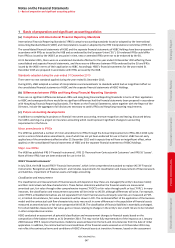 349
349 -
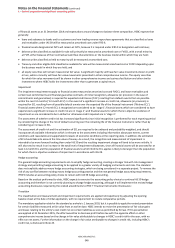 350
350 -
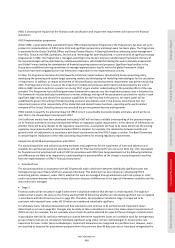 351
351 -
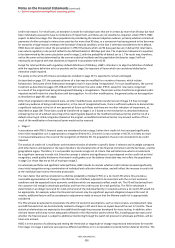 352
352 -
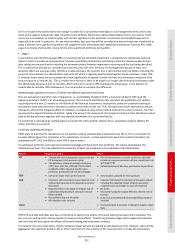 353
353 -
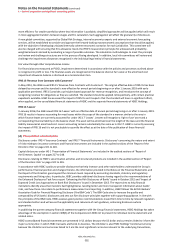 354
354 -
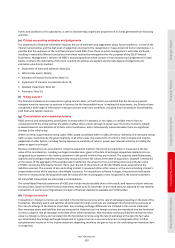 355
355 -
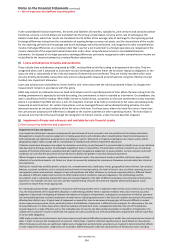 356
356 -
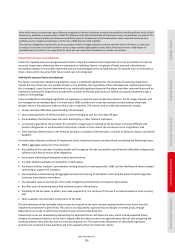 357
357 -
 358
358 -
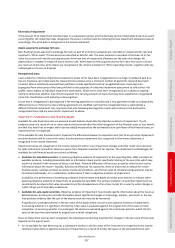 359
359 -
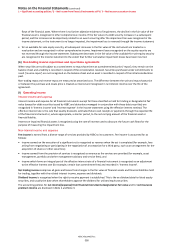 360
360 -
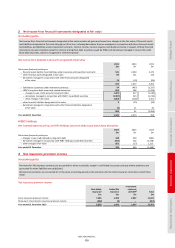 361
361 -
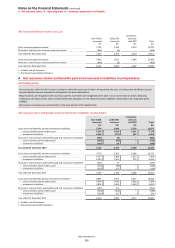 362
362 -
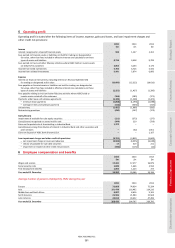 363
363 -
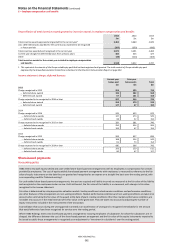 364
364 -
 365
365 -
 366
366 -
 367
367 -
 368
368 -
 369
369 -
 370
370 -
 371
371 -
 372
372 -
 373
373 -
 374
374 -
 375
375 -
 376
376 -
 377
377 -
 378
378 -
 379
379 -
 380
380 -
 381
381 -
 382
382 -
 383
383 -
 384
384 -
 385
385 -
 386
386 -
 387
387 -
 388
388 -
 389
389 -
 390
390 -
 391
391 -
 392
392 -
 393
393 -
 394
394 -
 395
395 -
 396
396 -
 397
397 -
 398
398 -
 399
399 -
 400
400 -
 401
401 -
 402
402 -
 403
403 -
 404
404 -
 405
405 -
 406
406 -
 407
407 -
 408
408 -
 409
409 -
 410
410 -
 411
411 -
 412
412 -
 413
413 -
 414
414 -
 415
415 -
 416
416 -
 417
417 -
 418
418 -
 419
419 -
 420
420 -
 421
421 -
 422
422 -
 423
423 -
 424
424 -
 425
425 -
 426
426 -
 427
427 -
 428
428 -
 429
429 -
 430
430 -
 431
431 -
 432
432 -
 433
433 -
 434
434 -
 435
435 -
 436
436 -
 437
437 -
 438
438 -
 439
439 -
 440
440 -
 441
441 -
 442
442 -
 443
443 -
 444
444 -
 445
445 -
 446
446 -
 447
447 -
 448
448 -
 449
449 -
 450
450 -
 451
451 -
 452
452 -
 453
453 -
 454
454 -
 455
455 -
 456
456 -
 457
457 -
 458
458 -
 459
459 -
 460
460 -
 461
461 -
 462
462 -
 463
463 -
 464
464 -
 465
465 -
 466
466 -
 467
467 -
 468
468 -
 469
469 -
 470
470 -
 471
471 -
 472
472 -
 473
473 -
 474
474 -
 475
475 -
 476
476 -
 477
477 -
 478
478 -
 479
479 -
 480
480 -
 481
481 -
 482
482 -
 483
483 -
 484
484 -
 485
485 -
 486
486 -
 487
487 -
 488
488 -
 489
489 -
 490
490 -
 491
491 -
 492
492 -
 493
493 -
 494
494 -
 495
495 -
 496
496 -
 497
497 -
 498
498 -
 499
499 -
 500
500 -
 501
501 -
 502
502
 |
 |

HSBC HOLDINGS PLC
357
Strategic Report Financial Review Corporate Governance Financial Statements Shareholder Information
Reversals of impairment
If the amount of an impairment loss decreases in a subsequent period, and the decrease can be related objectively to an event
occurring after the impairment was recognised, the excess is written back by reducing the loan impairment allowance account
accordingly. The write-back is recognised in the income statement.
Assets acquired in exchange for loans
Non-financial assets acquired in exchange for loans as part of an orderly realisation are recorded as ‘Assets held for sale’ and
reported in ‘Other assets’ if those assets are classified as held for sale. The asset acquired is recorded at the lower of its fair
value less costs to sell and the carrying amount of the loan (net of impairment allowance) at the date of exchange. No
depreciation is charged in respect of assets held for sale. Write-downs of the acquired asset to fair value less cost to sell and
any reversals of previous write-downs are recognised in the income statement in ‘Other operating income’, together with any
realised gains or losses on disposal.
Renegotiated loans
Loans subject to collective impairment assessment whose terms have been renegotiated are no longer considered past due,
but are treated as up to date loans for measurement purposes once a minimum number of payments required have been
received. Where collectively assessed loan portfolios include significant levels of renegotiated loans, these loans are
segregated from other parts of the loan portfolio for the purposes of collective impairment assessment to reflect their risk
profile. Loans subject to individual impairment assessment, whose terms have been renegotiated, are subject to ongoing
review to determine whether they remain impaired. The carrying amounts of loans that have been classified as renegotiated
retain this classification until maturity or derecognition.
A loan that is renegotiated is derecognised if the existing agreement is cancelled and a new agreement made on substantially
different terms or if the terms of an existing agreement are modified such that the renegotiated loan is substantially a
different financial instrument. Any new loans that arise following derecognition events will continue to be disclosed as
renegotiated loans and are assessed for impairment as above.
Impairment of available-for-sale financial assets
Available-for-sale financial assets are assessed at each balance sheet date for objective evidence of impairment. If such
evidence exists as a result of one or more events that occurred after the initial recognition of the financial asset (a ‘loss event’),
and that loss event has an impact which can be reliably measured on the estimated future cash flows of the financial asset, an
impairment loss is recognised.
If the available-for-sale financial asset is impaired, the difference between its acquisition cost (net of any principal repayments
and amortisation) and its current fair value, less any previous impairment loss recognised in the income statement, is
recognised in the income statement.
Impairment losses are recognised in the income statement within ‘Loan impairment charges and other credit risk provisions’
for debt instruments and within ‘Gains less losses from financial investments’ for equities. The impairment methodologies for
available-for-sale financial assets are set out as follows:
• Available-for-sale debt securities. In assessing objective evidence of impairment at the reporting date, HSBC considers all
available evidence, including observable data or information about events specifically relating to the securities which may
result in a shortfall in the recovery of future cash flows. Financial difficulties of the issuer, as well as other factors such as
information about the issuers’ liquidity, business and financial risk exposures, levels of and trends in default for similar
financial assets, national and local economic trends and conditions, and the fair value of collateral and guarantees may be
considered individually, or in combination, to determine if there is objective evidence of impairment.
In addition, the performance of underlying collateral and the extent and depth of market price declines is relevant when
assessing objective evidence of impairment of available-for-sale ABSs. The primary indicators of potential impairment are
considered to be adverse fair value movements and the disappearance of an active market for a security, while changes in
credit ratings are of secondary importance.
• Available-for-sale equity securities. Objective evidence of impairment may include specific information about the issuer as
detailed above, but may also include information about significant changes in technology, markets, economics or the law
that provides evidence that the cost of the equity securities may not be recovered.
A significant or prolonged decline in the fair value of the equity below its cost is also objective evidence of impairment.
In assessing whether it is significant, the decline in fair value is evaluated against the original cost of the asset at initial
recognition. In assessing whether it is prolonged, the decline is evaluated against the continuous period in which the fair
value of the asset has been below its original cost at initial recognition.
Once an impairment loss has been recognised, the subsequent accounting treatment for changes in the fair value of that asset
depends on the type of asset:
• for an available-for-sale debt security, a subsequent decline in the fair value of the instrument is recognised in the income
statement when there is objective evidence of impairment as a result of further decreases in the estimated future cash
